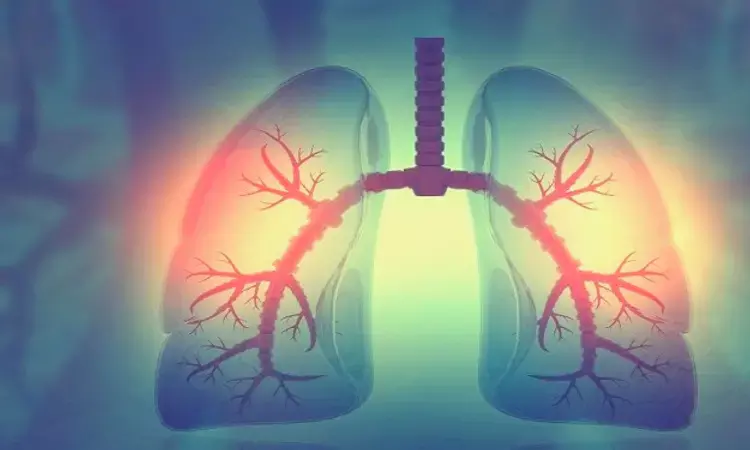- Home
- Medical news & Guidelines
- Anesthesiology
- Cardiology and CTVS
- Critical Care
- Dentistry
- Dermatology
- Diabetes and Endocrinology
- ENT
- Gastroenterology
- Medicine
- Nephrology
- Neurology
- Obstretics-Gynaecology
- Oncology
- Ophthalmology
- Orthopaedics
- Pediatrics-Neonatology
- Psychiatry
- Pulmonology
- Radiology
- Surgery
- Urology
- Laboratory Medicine
- Diet
- Nursing
- Paramedical
- Physiotherapy
- Health news
- Fact Check
- Bone Health Fact Check
- Brain Health Fact Check
- Cancer Related Fact Check
- Child Care Fact Check
- Dental and oral health fact check
- Diabetes and metabolic health fact check
- Diet and Nutrition Fact Check
- Eye and ENT Care Fact Check
- Fitness fact check
- Gut health fact check
- Heart health fact check
- Kidney health fact check
- Medical education fact check
- Men's health fact check
- Respiratory fact check
- Skin and hair care fact check
- Vaccine and Immunization fact check
- Women's health fact check
- AYUSH
- State News
- Andaman and Nicobar Islands
- Andhra Pradesh
- Arunachal Pradesh
- Assam
- Bihar
- Chandigarh
- Chattisgarh
- Dadra and Nagar Haveli
- Daman and Diu
- Delhi
- Goa
- Gujarat
- Haryana
- Himachal Pradesh
- Jammu & Kashmir
- Jharkhand
- Karnataka
- Kerala
- Ladakh
- Lakshadweep
- Madhya Pradesh
- Maharashtra
- Manipur
- Meghalaya
- Mizoram
- Nagaland
- Odisha
- Puducherry
- Punjab
- Rajasthan
- Sikkim
- Tamil Nadu
- Telangana
- Tripura
- Uttar Pradesh
- Uttrakhand
- West Bengal
- Medical Education
- Industry
High-resolution CT and histopathology combination enhances accuracy of ILD diagnosis: Study

Japan: A combination of high-resolution CT (HRCT) and histological patterns enhances the ability of radiologists to diagnose interstitial lung disease (ILD), a recent study has stated. This helps in providing appropriate treatment to patients with lung cancer who presented with ILD. The study appears in General Thoracic and Cardiovascular Surgery.
Interstitial lung disease can manifest in several ways, and each of them has different pathophysiology. One of these is idiopathic interstitial pneumonia (IIP) which then has a common subtype of idiopathic pulmonary fibrosis (IPF) that is related to poor patient outcomes. Patients with interstitial lung disease have high lung cancer rates and higher rates of morbidity as a result of lung cancer treatment. And, are also at risk of complications that develop within a month following surgical treatment.
Against the above background, Akira Iyoda, Toho University School of Medicine, Ota-ku, Tokyo, Japan, and colleagues aimed to determine the prognostic impact of interstitial lung disease subclassification based on both high-resolution computed tomography (HRCT) scan findings and histopathological findings.
For this purpose, the researchers retrospectively analyzed 104 patients who were diagnosed with clinical ILD in accordance with HRCT scan findings and who underwent lung cancer surgery. HRCT scan findings were re-classified and histopathological patterns of ILDs in lung specimens were validated via an expert multidisciplinary discussion.
The study yielded the following findings:
- There were several mismatches between HRCT scan findings and histological patterns. Moreover, 83.7% and 5.8% of patients were diagnosed with definitive ILD and pathological non-ILD, respectively.
- 82 patients with idiopathic interstitial pneumonias (IIPs) were divided into the idiopathic pulmonary fibrosis (IPF) (n = 61) group and the other group (n = 21).
- The 5-year overall survival rate of the IPF group was significantly lower than that of the other group (22.8% vs 67.9%).
- Sub-classification of IIPs was found to be an independent prognostic factor for overall survival in patients with lung cancer.
The researchers conclude, "an accurate, detailed diagnosis of IIP/IPF according to both HRCT scan findings and histopathological patterns is critical for providing an appropriate treatment among lung cancer patients."
Reference:
Azuma, Y., Sakamoto, S., Homma, S. et al. Impact of accurate diagnosis of interstitial lung diseases on postoperative outcomes in lung cancer. Gen Thorac Cardiovasc Surg (2022). https://doi.org/10.1007/s11748-022-01868-6
Dr Kamal Kant Kohli-MBBS, DTCD- a chest specialist with more than 30 years of practice and a flair for writing clinical articles, Dr Kamal Kant Kohli joined Medical Dialogues as a Chief Editor of Medical News. Besides writing articles, as an editor, he proofreads and verifies all the medical content published on Medical Dialogues including those coming from journals, studies,medical conferences,guidelines etc. Email: drkohli@medicaldialogues.in. Contact no. 011-43720751


